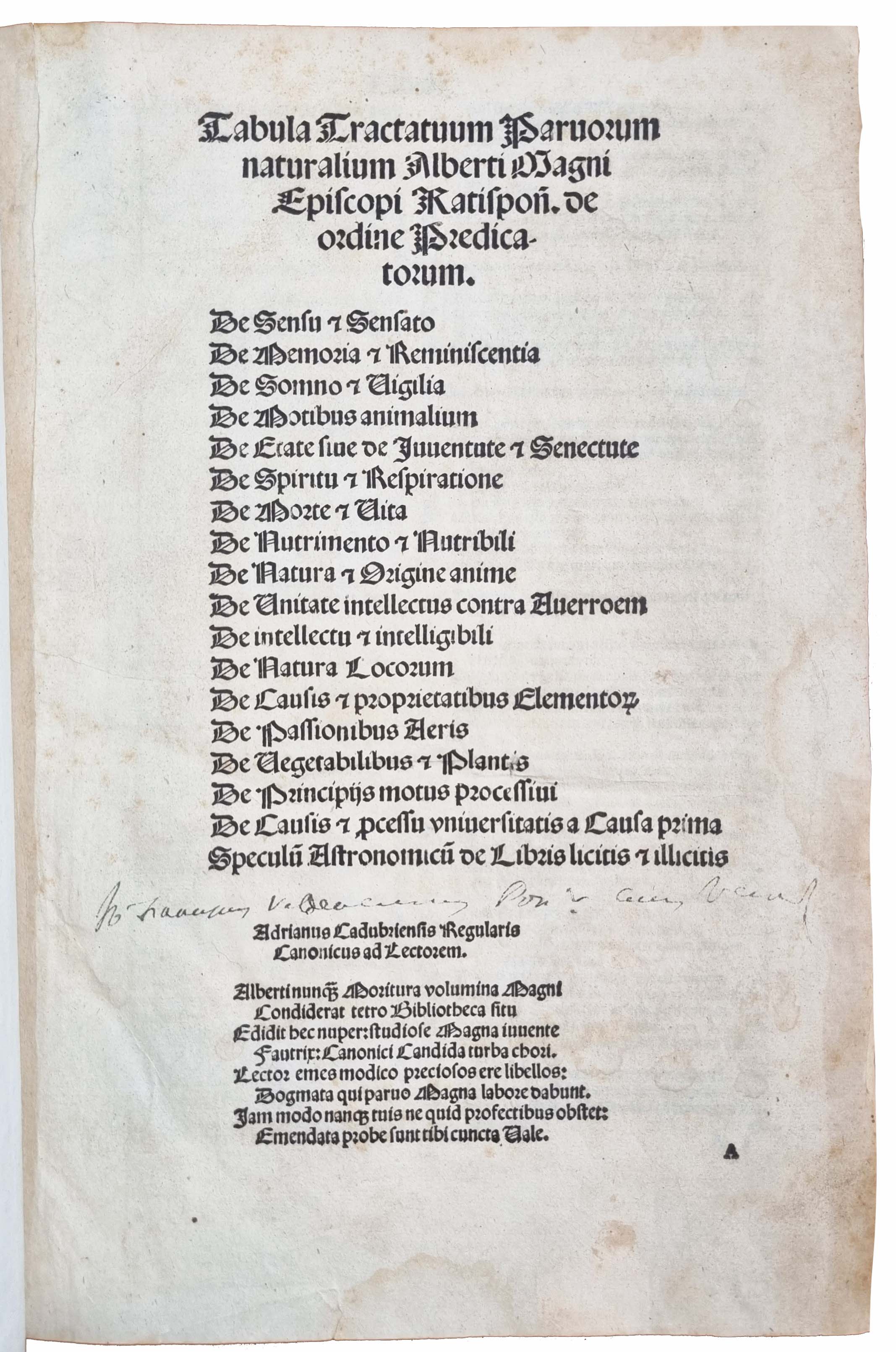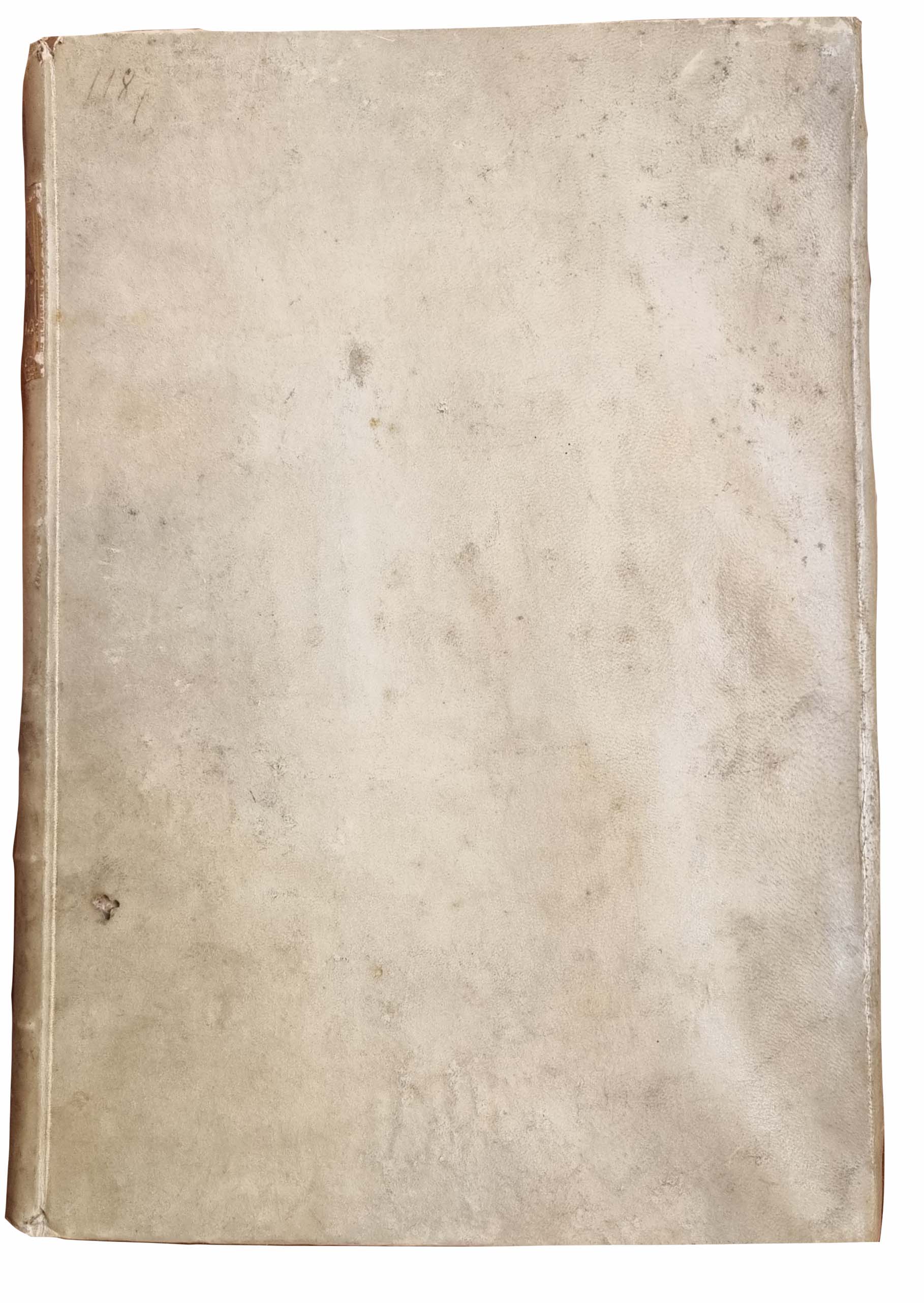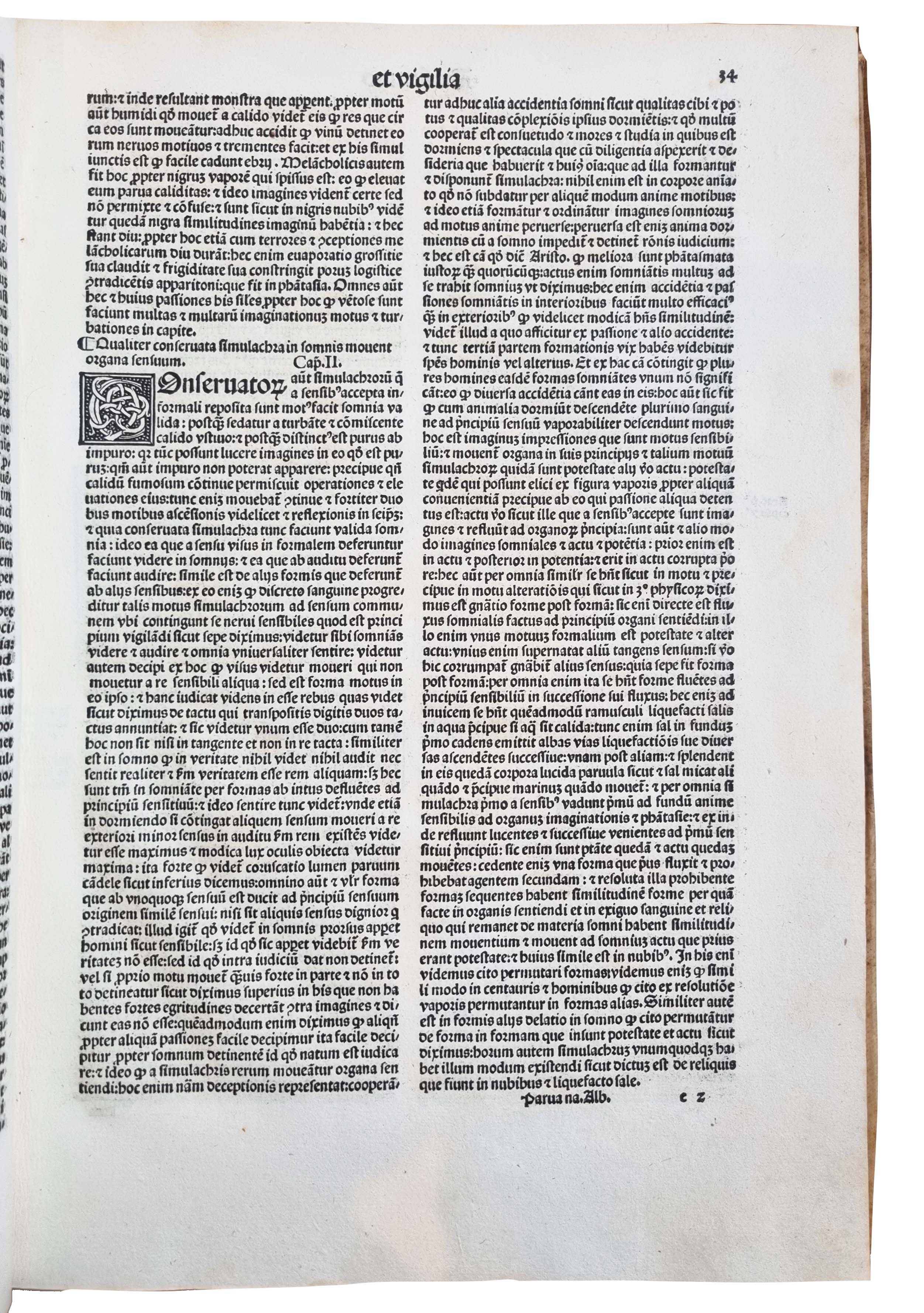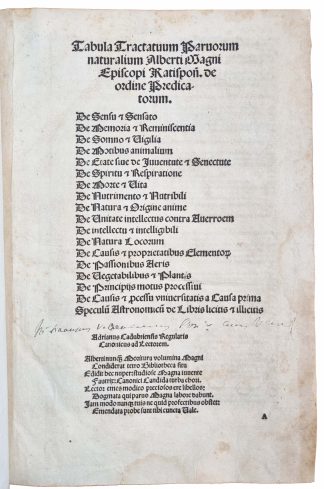ALBERTUS MAGNUS.
Parva naturalia
Venice, Heirs of Octavianus Scotus, 1517£9,500.00
FIRST EDITION. Folio, ff. (vi) 233, lacking final blank. Double column, gothic letter, charming woodcut floriated and historiated initials, printer’s device to verso of last. T-p very slightly soiled with early ms. annotation, small wormholes to lower blank margin of last gathering, early repairs to a few lower outer edges, light age yellowing to first gathering, occasional light marginal waterstains, small ink splashes and mainly marginal soiling to a few ll. A good copy in C17 vellum, small hole to upper cover, yapp edges, gilt label to spine, a.e.r.
A good copy of the first edition of this remarkable collection of treatises on natural science by Albertus Magnus, edited by the Italian philosopher and physician Marcantonio Zimara (c. 1470-1532).
A German Dominican friar, bishop and philosopher, Albertus Magnus (c. 1200-1280) is regarded as the most learned and prolific scholar of the Middle Ages, the only one to whom the epithet ‘Magnus’ (‘The great’) was applied. Known by his contemporaries as the “Doctor universalis”, he was later beatified and proclaimed Doctor of the Church. Albertus was active in almost all departments of learning, and the influence of his writings and commentaries on theology, logic, metaphysics, psychology, and the natural sciences was immense. “He combined elements of Aristotelism, Neo-Platonism, Christian theology and Muslim and Jewish philosophy, which he formed into one great system; but his chief aim as a philosopher remained the reconciliation of Aristotelianism with Christian teaching.” (PMM 17).
The 18 works included in this volume constitute an extremely interesting and valuable selection of Albertus’ studies on natural science and philosophy, which complement his best known ‘De animalibus’ and ‘De mineralibus’. Particularly outstanding is ‘De vegetabilibus et plantis’, a paraphrase in seven books of the pseudo-Aristotelian ‘De vegetabilibus’ on the morphology and physiology of plants, also including Albertus’ personal digressions based on his own botanical observations. Albert “succeeded in giving consistent, convincing explanations of the small details of plant life […] These books stand as a remarkable reconciliation of the curiosity of a naturalist, the temperament of a philosopher, and the responsibilities of a teacher — unique in the Middle Ages and rare enough in any period.” (Reeds) Also important is ‘Speculum astronomicum’, whose attribution to Albertus is disputed. Aimed at opposing superstition, it explains the distinction between descriptive and judicial astronomy, and it is fundamental for its bibliographical content: it lists numerous titles of astronomical and astrological writings available to Albert and his contemporaries, recommending their value in a Christian context.
In the volume are also Albert’s treatises on sensation, discussed in regard to sleep and waking (‘De somno et vigilia’), the sense organs (‘De sensu et sensato’), imagination and memory (‘De memoria et reminiscenza). The motion of the living things is described in ‘De motibus animalium’ and ‘De spiritu et respiratione’, while ‘De juventute et senectute’ and ‘De morte et vita’ are concerned with the processes of ageing, living and dying. Physiological functioning is discussed in ‘De nutrimento et nutribili’, while intellect is the object of ‘De intellectu et intellegibili’, ‘De unitate intellectus’ and ‘De natura et origine animae’. Also notable are ‘De natura locorum’ discussing the geography of the earth and its climatic zones, as well as ‘De causis proprietatum elementorum’ on the properties of the elements and their position in the sublunar region.
USTC 808374; USTC It. 16th p. 13; Graesse I, p. 55; Houzeau-Lancaster 1674. Not in Durling, Wellcome or Cantamessa. K. Reeds, ‘Albert on the Natural Philosophy of plant life’ in Albertus Magnus and the sciences (1980). Worldcat and USTC records only 5 copies in the USIn stock





